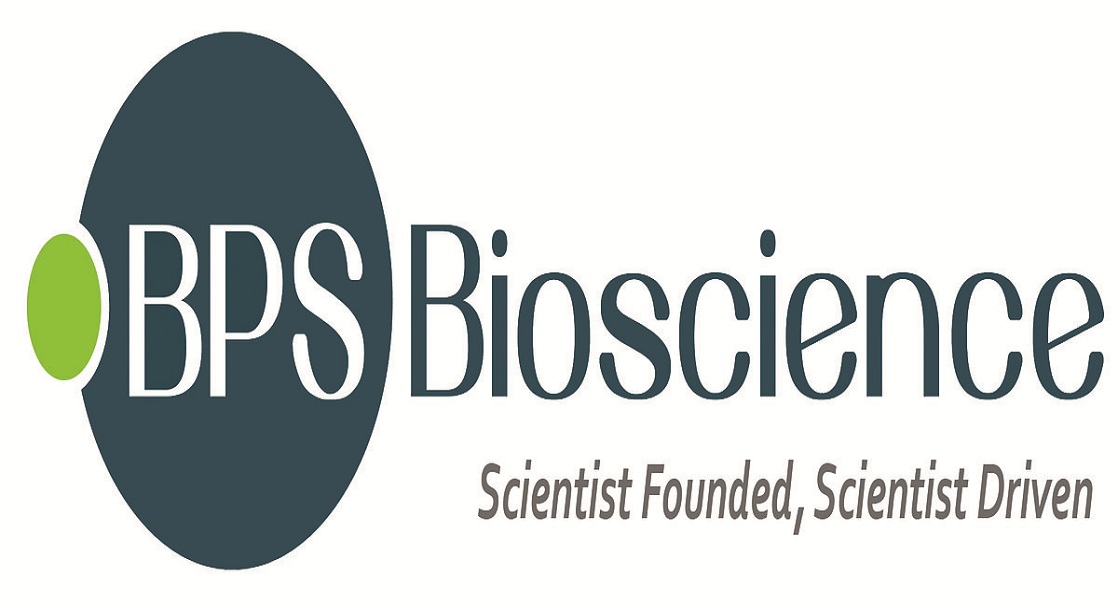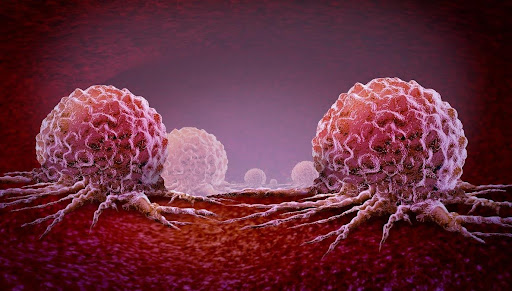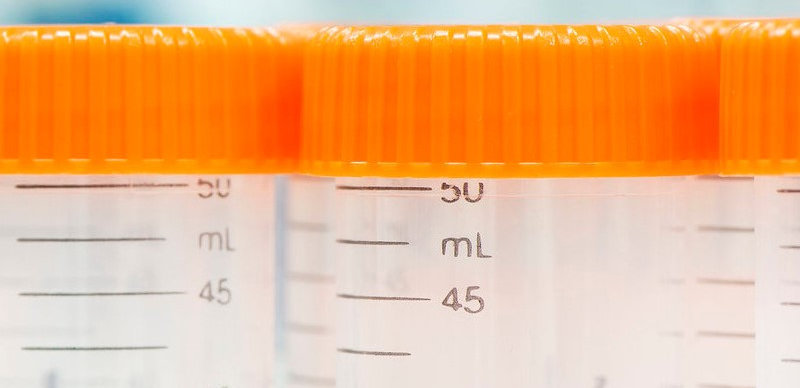
A Potential Therapeutic Role of Hyaluronic Acid in Human Health
Hyaluronic acid (HA) is a non-protein glycosaminoglycan (GAG) having unique physico-chemical properties, produced by chondrocytes, fibroblasts, and synoviocytes.HA is synthesised by hyaluronan synthase (HAS), of which vertebrates have three isozymes (HAS-1, HAS-2, and HAS-3). These isozymes synthesise different sizes of HA polymers, which are differentially regulated at the transcriptional, translational, and post-translational levels, which include epigenetic processes, sub-cellular localization, and alternative splicing. Despite sharing between 50 and 71% of their genetic makeup, the three genes are spread across three distinct chromosomes. They occur, respectively, at 19 q13.4, 8 q24.12, and 16 q22.1. Hyaluronidase catabolizes HA, and it has been observed that the MW of HA in cartilage declines with age.
HA regulates cellular behaviour by controlling the macro- and microenvironments of the tissue by binding to ECM molecules and cell surface receptors. An in vitro investigation examined the interaction between HA and exogenous sulfate-labeled cartilage proteoglycans (PGs) at the calf articular cartilage chondrocyte cell surface. According to the study, the HA-binding area on the cell surface is where PGs interact with HA receptors. Only a small portion of the bound, 35S-labeled PGs are internalized; located at the cell surface. HA can bind to the three main classes of cell surface receptors, each having a unique role: CD44 (a membrane glycoprotein), RHAMM (the receptor for hyaluronate-mediated motility), and ICAM-1 (intercellular adhesion molecule 1).CD44 is the most widely distributed cell surface receptor recognised for HA binding Other ligands that interact with CD44 include osteopontin, collagens, and matrix metalloproteinases (MMPs). HA may inhibit signal transmission via the HA receptors CD44 and RHAMM. According to the studies, higher- and lower-MW HA interact with CD44 receptors to produce several biological effects through different molecular and cellular pathways. Both chondrocyte survival pathways and apoptotic (chondroptotic) pathways are impacted by CD44-mediated signalling.
The physiological functions of HA in bodily tissues and fluids are well characterized. HA is reported to have a role in several cellular interactions (cell differentiation, proliferation, development, and recognition) and physiological processes (lubrication, hydration balance, matrix structure, and steric interactions). The physiological roles of HA in the typical structure and operation of joints are well explained by the fact that it has distinct rheological properties and is a component of GAG and articular cartilage.
Properties of Hyaluronic Acid
HA performs a number of structural functions across the ECM via specific and non-specific interactions. It is useful for proteins and essential for cellular signaling with specific molecules and receptors. Neurocan, CD44, the receptor for hyaluronate-mediated-mediated motility (RHAMM), GHAP (glial HA binding protein), LYVE-1 (Lymphatic Vessel Endothelial Hyaluronan Receptor 1), Versican, Aggrecan, and TSG6 (TNF-stimulated gene 6) are a few examples of receptors and molecules. According to the most recent research, CD44 is a multifunctional, cell-surface conjugated protein found on many different types of cells. HA is additionally helpful for the growth of epithelial tissue cells, eosinophils, macrophages, and a few animals tissue cells. Only HA particles with low relative molecular masses, with sizes ranging from 20 kDa to 450 kDa, have a significant role in growth. It is well known that molecules with a higher relative molecular mass promote wound healing. It was found that the presence of HA with a reduced molecular weight caused less scar tissue. These findings underline the significance of relative molecular mass for the efficiency of scarring and healing. Higher molecular mass HA has been shown to support tissue integrity by forming minute fragments that initiate linkages that nurse an inflammatory response throughout an injury.
HA is gaining recognition as a high-quality biomaterial scaffold in tissue engineering due to its biocompatibility and widespread presence in the ECM of tissues. Many scientists have discovered that crosslinking HA in the form of a gel for tissue engineering and as a regenerative medicine significantly improves its characteristics. HA is frequently cross-linked by attachment to chemical groups like (a) tyramines (brand name: Corgel), (b) thiols (brand names: Extracel, HyStem), (c) methacrylates, (trade name: Hymovis), as well as with gases (brand name: Hylan-A), or with divinylsulfone (trade name: Hylan-B). This ability of HA to cross-link aids in promoting the proliferation of epithelial cells, which are frequently required to make hydrogels to examine the ontogenesis of tube-shaped structures.These hydrogels resemble properties with human soft tissue s, and are easily adapted to control and change, making HA a good candidate for tissue engineering studies. As an example, HA hydrogels are known for creating vasculature from epithelium primogenitor cells via exploitation of growth factors - VEGF and Ang -1 to start proliferation and form a network of tube -shaped structures. The ability to form such tube -shaped structure networks by extensive use of HA hydrogels has offered some prospects for in vivo analysis and clinical applications. In an in -vivo study, HA gels were Journal Pre-proof Journal Pre-proof applied and epithelium colony forming cells were planted into mice up to 3 days. Hydrogel formation showed that the host and built vessels joined within 1 - 2 weeks of implantation, indicating viability of the built vasculature.
HA is a promising choice for tissue engineering investigations because these hydrogels have characteristics that are similar to those of human soft tissues and are simple to control and modify. For instance, HA hydrogels are recognised for utilising the growth hormones VEGF and Ang-1 to initiate proliferation and develop a network of tube-shaped structures to create vasculature from epithelial primogenitor cells. There are certain opportunities for in-vivo analysis and clinical applications due to the extensive use of HA hydrogels' capacity to build such tube-shaped structure networks. In an in-vivo investigation, mice were implanted with epithelial colony-forming cells for up to 3 days after HA gels had been administered.
Recent Applications of Hyaluronic Acid in Drug Delivery
Wound Healing
When the skin fails to function as a mechanical barrier to the environment, infectious substances can enter and cause infections on the skin. Thus, reconstructing a barrier of the skin layers requires quick and effective healing. Wound healing follows the following phases: inflammation, granulation development, re-epithelialization, and transformation. HA plays a vital role in the mediation of cellular and matrix events. HA has been used to create biological scaffolds for use in wound healing. Due to their viscoelastic characteristics, these scaffolds frequently include proteins like fibronectin linked to HA to aid cell migration into the wound.
In addition to its current use as a primary dispersion agent, HA may also be taken into consideration for application in situations like muscular stiffness when a change in the fascia's viscosity is needed. This is often notably vital for people with polygenic diseases affected by chronic wounds. The animal tissue matrix, where HA is produced as a wound healing agent, joins CD44 to promote keratinocyte migration. It is demonstrated that an antisense transgene unique to the epidermis suppressed CD44 expression, which led to incorrect HA accumulation in the superficial corium.These findings unequivocally support the crucial functions of HA and CD44 in skin physiology and tissue healing. The main characteristic of wound healing in vertebrates is the absence of fibrous scarring and foetal wound healing. Even after prolonged periods, the amount of HA in vertebrate wounds remains higher than in adult wounds, indicating that HA may partially prevent albuminoidal deposition and hence scarring. This suggestion is consistent with a WHO analysis that found that removing HA causes fibrotic scarring (shown in adult and late gestation vertebrates). The HA ester-containing product Hyalofill® is available in fleece and rope formats (HYAFF®).
In contact with wound exudate, it converts itself into a soft gel that helps to maintain a moist environment. This leads to the development of granulation tissue and makes dressing removal simple. HA plays a significant part in the granulation phase of healing as well as the cascade of inflammation. Ultimately, this aids in preserving a moist environment around the wound where cell migration (for example, fibroblast and endothelial cell migration to the wound bed) can occur. For instance, Staphylococcus aureus is one of the main causes of wound formation. This characteristic results mostly from its virulence factor, which generates the exoenzyme hyaluronidase, responsible for breaking down HA.In this case, the wound healing effect of HA was demonstrated by administering it along with a systemic antibiotic. In accordance with this, previous studies proposed that the hyaluronidase found in Staphylococcus aureus may digest the excess HA present without affecting the amount in the host's body. Thus, this may aid in limiting the spread of Staphylococcus aureus and accelerating wound healing. In the circumstances of wound healing, such a characteristic can be anticipated as a feasible therapy alternative.
Cancer Cells
The use of nanotechnology in medicine has received a lot of interest lately. The use of various nanomaterials as possible diagnostic and therapeutic agents for the imaging and treatment of cancer has been widely practised in nanomedicine. In contrast to their organic counterparts, inorganic nanoparticles have special qualities such as ease of functionalization, inertness, and stability. It is widely known that target-site drug delivery is crucial for an effective treatment because the majority of anticancer medicines distribute throughout the body and harm healthy cells as well. Medication with a target-specific action is intended to increase their concentration at the sites in order to reduce the negative effects. A target-specific action of drugs is intended to increase their concentration at the sites to reduce side effects. The increased permeability and retention (EPR) effect, also known as passive targeting, causes nanoparticles with small diameters (1–200 nm) to preferentially concentrate at tumour locations. A substantial advancement in cancer therapy could result from the combination of the active targeting action with the EPR effect, which would further increase the cellular uptake of the drug or nanoparticles. Mucopolysaccharide levels are positively correlated with malignancy and a bad prognosis in several malignancies. Due to its mucoadhesive properties, HA is employed as a tumour marker for prostate and cervical carcinomas and can also be used to track their progression. In areas including the liver, kidney, bodily fluids, arteries, and the majority of tumour tissues, certain cell surface receptors are extensively prevalent and can be specifically bound by HA and its derivatives.
Proteins, peptides, nucleic acids, and numerous anticancer medications can all be transported via HA and its derivatives. To demonstrate this, HA and folic acid were combined to deliver the anti-cancer drug Doxorubicin to a specific tumor. Compared to blank micelles, the micellar formulation demonstrated improved cytotoxicity and CD-44-mediated cellular uptake. This again showed the potential of HA as a structural aid in the formation of an amphiphilic molecule that could be used for targeting. Effective cancer therapy depends on a number of characteristics, including the capacity to target tumours and site-specific medication release. PEG-conjugated hyaluronic acid nanoparticles (P-HA NPs) were studied as potential anticancer drug delivery systems for doxorubicin and camptothecin (CPT).The advantage of HA formulations is well appreciated in cancer therapy since HA specifically binds to the overexpressed CD44 receptor in several tumors. The targeting of tumour cells may be improved by utilising stable hydrophilic nanoparticles containing HA and the identification of CD44 receptors. The surface of cancer cells that express CD-44 can be employed as a target for HA-based formulations. For instance, liposomes coated with HA were effectively developed to target cancer cells. To visualise the interior workings of the HA-CD44 interaction, the produced liposomes were complexed with HA in the study using an aminoxy coupling procedure.The HA-decorated nanoliposomes showed a greater interaction with the cells with elevated CD44 expression compared to the downregulated cells, which showed a negligible uptake, citing the possibility of tumour targeting in the future. The targeting of tumour cells may be improved by utilising stable hydrophilic nanoparticles containing HA and the identification of CD44 receptors. The surface of cancer cells that express CD-44 can be employed as a target for HA-based formulations. For instance, liposomes coated with HA were effectively created to target cancer cells.
The HA coating on the drug's outer surface can be either hydrophilic or hydrophobic, indicating that the drug's nature may also have an impact on its cytotoxicity. For instance, a targeted drug delivery system based on mesoporous silica nanoparticles (MSNs) modified with HA is in the works. HA-MSNs have a particular affinity for the surfaces of some cancer cell lines that express CD44 excessively. Therefore, it is expected that both the target cell lines and appropriate pharmacological agents should be carefully chosen for the study in order to demonstrate the benefit of HA-NP delivery systems.
Inflammation
In the early stages of wound repair, the tissues are overabundant in HA. HA acts as a promoter of inflammation, which is required for the healing of a skin wound. In an air pouch model of carrageenan/IL-1-induced inflammation, HA increased the levels of inflammatory cytokines (TNF- and IL-8) in a dose-dependent manner. This was caused by the female reproductive organ fibroblasts' CD44-mediated mechanism at suitable HA concentrations (10 g/mL to 1 mg/mL). HA has been shown to be synthesised in association with epithelial cells in response to TNF-like inflammatory cytokines and microorganism LPS (lipopolysaccharide) to aid cytokine-activated lymphocytes that express HA-binding versions of CD44 in stratified and static flow. HA plays contradictory roles during the inflammatory process. It doesn't just encourage inflammation; it also has the ability to reduce it, which aids in the stabilisation of the connective tissue matrix. In its early phases, connective tissue contains a lot of tissue intermediates made by inflammatory cells' reactive oxygen metabolites and matrix-degrading enzymes. Tissue inflammation can restore the balance of a neighbouring joint tissue matrix. In contrast to its function in inducing inflammation, as is depicted above, HA functions here as an essential moderator. It also protects cells from any damage caused by free radicals. This is due to its ability to scavenge free radicals, a quality shared by all such massive polyionic polymers.
In a recent rat model, HA demonstrated its ability to repair connective tissue damage. By means of particular interactions with the biological inflammatory elements, HA may additionally play a role in the response loop of inflammatory activation. TNF-, a critical protein produced during inflammation, is known to stimulate TSG-6 in fibroblasts and inflammatory cells. A HA-binding macromolecule called TSG-6 interacts with IgI to produce a stable complex that enhances the plasmin-inhibitory action of the latter.This enzyme causes inflammatory tissue injury by triggering a chemical reaction cascade involving matrix metalloproteinase and alternative proteinases. Thus, a strong feedback loop to control inflammation may be provided by the complex synthesis of the TSG-6-IgI complex and its subsequent binding to HA in the ECM. In the long run, this might aid in stabilising connective tissue recovery. It has been demonstrated that HA has a pro-inflammatory activity that lowers inflammation when TSG-6 is delivered in a mouse air pouch model of carrageenan/IL-1 produced inflammation. As a result, the outcomes are comparable to those of general anti-inflammatory therapy.
Respiratory Disease
Asthma is a chronic disease of the airways and the lungs characterised by their transformation, which incorporates changes within the ECM. But nothing is known about how ECM mediates these changes. A large component of the ECM known as HA has been linked to various other biological processes in addition to respiratory diseases. The formation of HA has been recognised as an important indicator of inflammation; however, another substance may have pathological implications such as altering the tissue's mechanism, increasing the spread of single molecules, and increasing and modulating the production of the remodelling growth factor-beta (TGF-ß).The respiratory organ's scleroprotein, which has the ability to adhere to mucous membranes, is protected against inflammation by the abundance of HA found in the lungs. According to a study, HA may be effectively used to deliver a medicine to the nasal and respiratory systems and may increase its retention period by delivering sustained release. Within the physiological state of the upper and lower airways, endogenous HMWHA is crucial. It is an essential component of the normal secretions that line the airways that uses a medication to have anti-angiogenic effects, increasing cell survival and mucociliary clearance. This maintains healing processes, stabilises connective tissues, organises complicated matrices, and controls tissue connection.Thus, exogenous HMWHA offers a promising therapeutic agent for treating nasal and respiratory organ disorders such as allergic and non-allergic inflammation, asthma, chronic preventative pneumonia, and fibrosis that include inflammation, aerophilous stress, and animal tissue regeneration. One such marketed product that combines dexpanthenol and HA (moisturiser) is the Hysan® Pflege Spray (regeneration-supporting). A strained nasal mucosa can regenerate with the aid of this medication.A combination of HA's film-like coating of the nasal mucosa and dexpanthenol's additional moisturising effect supports healthy renewal. Acute otorhinolaryngological diseases are treated with a medical device called Broncalt® that is HA-based. HA, hot water, and grapefruit seed extract make up the gadget. This class II device could safely and effectively perform anti-inflammatory, antibacterial, and cleaning activities in addition to providing quicker symptom alleviation for conditions affecting the upper airways. In all patient sub-groups, the 2-week treatment demonstrated a considerable and secure reduction of clinical characteristics.
Anti-Aging
HA plays a crucial role within the stratum and has essential functions in the re-epithelialization process because of its unique properties. It is a crucial component of the ECM of basal keratinocytes (major constituents of the epidermis). Its ability to scavenge free radicals contributes to keratinocyte migration and proliferation. Higher concentrations of HA are found to develop in aged skin due to the quantity of proliferating keratinocytes in the basal layer of the stratum. Additionally, CD44 and HA are said to work together to promote regeneration.The provision of an open and hydrous structure for nutrient transport is thought to be the most important role of HA in stratum. According to a recent study, HA concentration increased when retinoic acid (vitamin A) was present. An increase in HA levels in the skin is associated with certain protective effects against photoaging and skin damage, which extends tissue. As a free-radical scavenger, HA aids in radiation defence. This is consistent with CD44's function as a HA receptor in the stratum. Additionally, epidermal HA controls keratinocyte proliferation and is crucial for cuticle development and tissue re-epithelialization.
Skin aging is one of the causes for a decrease in the skin tone and volume causing firming due to the degradation of ECM components like collagen and HA, leading to wrinkling and sagging. To cite an example, HA was formulated in the form of a skin patch for studying its anti -wrinkle efficacy. Recently, use of a novel synthesized tripeptide in combination of other anti -aging agents like sodium hyaluronate, carnosine etc. were used to stimulate the synthesis of HA, both in dermal fibroblasts and keratinocytes. This study presented a substantial improvement in skin features related to skin firmness and spot removal.Skin ageing is one of the factors that contribute to a loss of skin volume and tone, resulting in firmness and wrinkles due to the breakdown of ECM components such as collagen and HA. HA was formulated as a skin patch to explore its anti-wrinkle effectiveness. A new tripeptide was recently employed to increase the production of HA in both dermal fibroblasts and keratinocytes, along with other anti-aging drugs such as sodium hyaluronate, carnosine, etc. This study showed a significant improvement in skin characteristics related to spot elimination and skin firmness.
Tissue and Regenerative Medicine
Hydrogels are essential for cell adhesion and growth in tissue engineering applications. Recent developments in biomaterials offer a new method for creating tissue engineering scaffolds that includes HA-like mucoadhesive polymers. In order to deliver growth factors for simple surface modification and a flexible design for tissue regeneration, hydrogels like HA can be modified into a three-dimensional and natural ECM-like structure.In this case, HA aids in the initiation of a new cell layer for anti-aging purposes and boosts the therapeutic potency of the scaffold or matrix. Additionally, this enhances the capacity for tissue regeneration, cell survival, and adhesion. Regenerative medicine focuses on replacing sick or damaged cells or tissues using integrated tissue engineering techniques.
In a novel study, a polymeric mixture of injectable HA and carboxymethyl hexanoyl chitosan was employed to create an in-situ gel that allowed for the prolonged release of berberine. The gels that were produced were discovered to be biodegradable, bioadhesive, and cytocompatible. The gels effectively prevented sodium nitroprusside (SNP)-induced apoptosis in the chondrocytes. Without the use of any crosslinkers or thermal treatments, LMW-HA and carboxymethylhexanoyl chitosan were simply combined to create gels. Thus, the gels proved to be a promising option for cartilage tissue engineering and intra-articular medication delivery.
BTL Biotechno Labs Pvt. Ltd. the sole distributor of Echelon Biosciences in India, offers their complete range of hyaluronic acid assay kits. These include Hyaluronidase Activity ELISA;Cat#K-6000, Hyaluronic Acid Sandwich ELISA; Cat#K-4800, Hyaluronic Acid AlphaScreen Assay; Cat#K-5800 & Hyaluronan Enzyme-Linked Immunosorbent Assay (HA ELISA); Cat#K-1200, designed for determining Hyaluronic Acid (HA) levels in human and animal biological fluids or cell supernatants. The HA ELISA Kit is a sensitive and robust method for quantification of HA in a competitive ELISA format. The concentration of Hyaluronic Acid in the sample is determined using a standard curve of known amounts of HA. Also, we supply an extensive range of their hyaluronic acid biochemical range including sodium-hyaluronate-250-kda, 1500 kDa, 100 kDa, 500 kDa, 800 kDa, 1000 kDa, 2000 kDa, 3000 kDa; Select-HA LoLadder Cat# HYA-LOLAD; HA850-TexasRed Cat# H-700R; Biotinylated Versican G1 Domain Cat# G-HA02; HA850-BODIPY-FL Cat#H-700F; HA30-TexasRed, HA300, HA850, Select-HA 400K,1000K, 200, 500, 50, 600, 900, 1250, Biotinylated Select-HA 250k, Methacrylated Hyaluronate 100 kDa, 250, 850, 6-O-palmitoyl-L-ascorbic acid, PNPP Substrate & Solution, Hyaluronidase Activity ELISA, Histidine Tagged Versican G1 Domain, Versican G1 Domain to the Indian scientific community at competitive prices. This comprehensive offering emphasizes our commitment to providing the scientific community with the necessary research products to advance their studies in the field of hyaluronic acid research.
For more details, please follow the below link:
BTL Biotechno Labs Pvt Ltd
Echelon Biosciences Products
Hyaluronic Acid Products - Echelon Biosciences (echelon-inc.com)
For product details, please connect with us at info@biotechnolabs.com.








